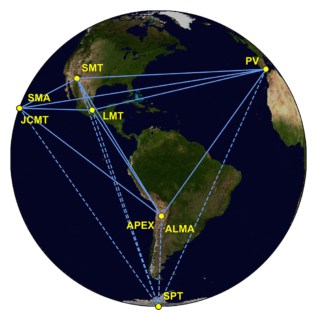In the May edition of the Physics World Stories podcast, Andrew Glester reflects on the biggest astronomy story of the year – the first ever image of a black hole and its “shadow”. Unless you’ve been living in a black hole yourself, you will have seen the glowing donut/eye of Sauron/smiley face, which is actually the supermassive black hole at the centre of the M87 elliptical galaxy, some 55 million light-years from Earth.
The image represents an incredible feat of science and engineering, produced from petabytes of data captured by the Event Horizon Telescope (EHT), a network of individual radio telescopes and telescopic arrays scattered across the globe. The EHT team reported the results in six papers in a special issue of Astrophysical Journal Letters, which is published by the Institute of Physics on behalf of the American Astronomical Society.
To find out more about the story behind the discovery, Glester catches up with three scientists from the EHT team who also hold positions at Radboud University in the Netherlands. First up is Monika Mościbrodzka, a member of EHT’s data analysis team who speaks about the significance of the discovery and the future prospects for the project. “Black holes are no longer just a theory. It’s now reality”, she says.

Meanwhile, Freek Roelof explains how the group generated the image from all the raw radio wave data. He worked on data collection at the Submillimeter Telescope (SMT) on Mount Graham, Arizona. When not doing cutting edge science Roelof plays the guitar and you can hear some of his black-hole-inspired songs in the podcast.
Since the publication of the image, many people have asked the question: “Why did these astronomers look all the way to the M87 galaxy, when we have a black hole – Sagittarius A* – at the centre of our own galaxy?” The reason comes down to scale. Despite being a thousand times further away, the black hole at the centre of M87 is a whopping 0.7 billion solar masses, a thousand times more massive than Sagittarius A*.
But now that the EHT has proved its capability, you wouldn’t bet against the collaboration capturing an image our Sagittarius A* at some point. In the meantime, you can take a look at this virtual reality simulation based on best-fit models of observations of Sagittarius A*. Its creator, Jordy Davelaar, joins the podcast to explain how and why he created it.
If you enjoy what you hear, then you can subscribe to Physics World Stories via your chosen podcast host. Also check out our other podcast Physics World Weekly, which brings you regular updates on the latest research developments in the physical sciences.



